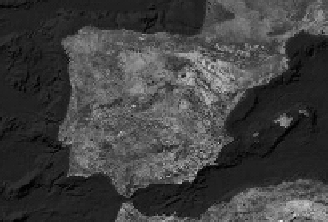Environmental Engineering Reference
In-Depth Information
assess not only the effects in the urban area, but also to detect the urban plume
behavior in downwind areas. The availability of the MareNostrum supercomputer
hold in the BSC-CNS, together with the advances in the parallelization of air
quality model codes, has allowed the high-resolution simulations.
Fig. 1.
(Left-up) Location of the domain of study; (right-up) population density in the areas
affected by the 80 km h
−1
limit; (left-down) points with daily average traffic information in the
city of Barcelona; (right-down) roads limited to 80 km h
−1
(red), roads with speed under 80 km h
−1
before the implementation of the limit (green) and not-affected roads (blue)
3. Results and Discussion
The measure of speed limitation (80 km h
−1
) is applied to the access roads of the
Barcelona Metropolitan Area (
Fig. 1)
, formed by Barcelona and other 15 munici-
palities, with high levels of NO
x
and PM10 emissions (Costa and Baldasano,
1996; Baldasano et al., 2008). The maximum speed allowed in these roads was
100 km h
−1
(in 63.2% of affected stretches) and 120 km h
−1
in 20.4% of the
considered stretches. The population directly affected by the measure (that is, city
dwellers adjacent to the roads where the limit of 80 km h
−1
is implemented) is 1.35
million inhabitants, but 3.29 million dwellers are potentially benefited from the
limitation of speed (
Fig. 1)
. The measure involves the average reduction of speed








